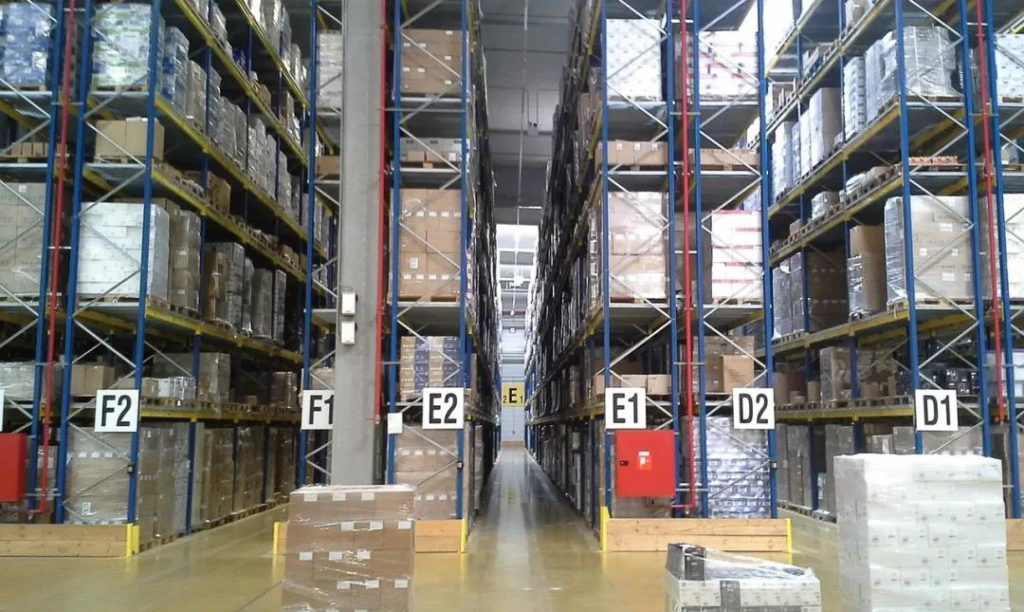Contents
How does the warehouse determine the safety stock?
The interpretation of safety stock in Baidu Encyclopedia is a buffer stock prepared to prevent uncertainties in future material supply or demand (such as a large number of unexpected orders, unexpected interruptions in delivery, sudden delays, etc.). Its size depends on the uncertainty of supply and demand, customer service level (or order fulfillment rate), as well as stock-out costs, and inventory holding costs.
A higher level of customer service will increase the amount of safety stock and result in lower stock-out costs and higher inventory holding costs; on the contrary, if the level of customer service is lower, the amount of safety stock will decrease and lead to higher stock-out costs. Inventory holding costs are small.
The determination of safety stock is based on mathematical statistics theory. First of all, suppose that the change in inventory revolves around the average consumption rate. The probability of greater than average demand and less than average demand is half, and the probability of out-of-stock is 50%.
The larger the safety stock, the smaller the possibility of out-of-stock; but the larger the stock, the surplus stock will appear. According to the best-selling degree of different products and the requirements of customers, the shortage should be maintained at an appropriate level, and a certain degree of shortage should be allowed.
Inventory classification
At present, inventory is divided into three categories according to its functions: turnover inventory, safety inventory, and excess inventory.
Turnover inventory refers to the inventory generated to meet normal demand during the turnover period. Turnover inventory is the inventory we need to use in the future period of time (that is, the turnover cycle).
The root cause of turnover inventory is the turnover cycle. How to understand this? Regardless of whether the dealer orders, deliver goods, or sells, it takes a certain amount of time to prepare and arrange, and it takes a certain time to execute, that is to say, it takes a certain cycle. In this cycle, our demand will not stop, it will continue. In order to continuously meet this continuous demand, we need to prepare a certain amount of inventory according to the required quantity, and this inventory is the turnover inventory.
Excess inventory is unnecessary inventory. The root of excess inventory is organizational behavior, that is, inventory caused by some operations and policies of our organization.
For example, if our forecast fails, the actual demand cannot meet our forecast, and the unconsumable inventory prepared according to the forecast becomes excess inventory. For another example, no matter whether it is for procurement or production, we can’t order as much as we want. We need to have a minimum order quantity problem. If the minimum order quantity exceeds the actual demand, it becomes excess inventory.
The root cause of safety stock is uncertainty, and safety stock exists to deal with uncertainty.
If all are certain and there is no accident, then there is no need to set up safety stock. Safety stock is not a necessary stock, and it is completely different from a turnover stock that is essential in theory. Safety stock is between turnover stock and excess stock.
When an accident occurs, the safety stock is used to assume the role of the turnover inventory. At this time, the safety stock is the turnover inventory. When there are no accidents, the safety stock does not work. At this time, the safety stock is excess stock.
Three factors affecting safety stock
Uncertainty of demand: The safety stock response is uncertainty, so uncertainty is the core factor affecting safety stock.
The number one factor affecting safety stock is the uncertainty of demand.
The impact of uncertainty in demand on safety stock is that the greater the fluctuation in demand, the more safety stock is required.
Uncertainty of supply: The more uncertain the supply, the more safety stock is required.
The uncertainty of supply is mainly reflected in the following three aspects:
- The procurement lead time is too long, and the longer the time, the more unpredictable the changes;
- The supplier’s on-time delivery level is low and unstable. I don’t know when you will deliver the goods. Naturally, it is very uncertain;
- The quality qualification rate of the supplied products, the more unstable the quality level, the lower the qualification rate, the stronger the uncertainty of the supply.
The requirement of the stock rate: The stock rate can be simply understood as the ratio of no shortage, and it can also be called the customer service level.
The higher the stock rate requirement, the more safety stock is required. Unlike the previous two major influencing factors, the uncertainty of demand and supply are generally uncontrollable, but the requirements for the availability rate are determined by the company itself.
It seems that the higher the stock rate, the better, but a high stock rate requires the support of a high safety stock level and requires additional costs. The company should determine it according to its actual situation.
One of the best ways to determine the availability rate is to quantify the availability rate, assess the gains and losses between the availability rate and the cost of out-of-stock, and strive to balance the availability rate and the inventory level. As far as supply chain management is concerned, a 100% availability rate is not worth the gain. The personal recommendation range for the availability rate is 95%-99%.
How to calculate safety stock
For most dealers, the calculation of safety stock is often based on experience, so how to accurately calculate safety stock? We have summarized several formulas.
The size of the safety stock is mainly determined by the customer service level (or order fulfillment). The so-called customer service level refers to the degree of satisfaction with customer needs. The formula is as follows:
Customer service level (5%)=annual out-of-stock times/annual order times.
The higher the customer service level (or order fulfillment rate), the less the occurrence of out-of-stocks, and the smaller the out-of-stock cost. However, due to the increase in the amount of safety stock, the inventory holding cost increases; and the level of customer service is higher. Low, indicating that there are more occurrences of out-of-stocks, higher out-of-stock costs, lower safety stock levels, and lower inventory holding costs. Therefore, it is necessary to comprehensively consider the relationship between customer service level, out-of-stock cost, and inventory holding cost, and finally determine a reasonable safety inventory.

How to get the maximum inventory and minimum inventory in the warehouse
Insufficient inventory or excessive inventory is caused by negligence in order, operation, and custody. In order to prevent this phenomenon, it is generally necessary to set the necessary inventory standards first, which are the “minimum inventory” and “maximum inventory”.
To prevent the shortage of stocks, the minimum standard for stocks is the “minimum stock (safety stock)”. In contrast, in order to prevent excessive inventory, the necessary inventory standard is “maximum inventory (inventory upper limit quantity)”. It is necessary to monitor inventory status with these two standards.
1. Use days as the unit for calculating inventory
Individual control of excessive quantities of materials can prevent excess or shortage of inventory. There are two methods, one is to calculate by actual numbers, and the other is to calculate by days. At the same time, these two methods can also be combined. To individually control inventory materials, it is necessary to understand the method of calculating inventory in days.
The index of this method is the inventory circulation rate and the inventory circulation period. The outbound amount is divided by the inventory amount, and the obtained value is the inventory circulation rate, which is expressed in times. When the cycle rate is higher, the inventory decreases and the conversion into cash is faster.
The inventory cycle days in the inventory cycle are 365 days divided by the inventory cycle rate. This number of days refers to the number of days required from the start of purchase to the point of sale, so this number represents inventory.
In short, to control inventory, it will be easier to understand by using “a few days of inventory”, that is, using days to express the current inventory. Therefore, using the number of days to express the small quantity and the maximum inventory quantity is set based on the inventory basis of “the average daily outbound quantity is several days”.

2. Calculate the minimum inventory
There are two ways to set the minimum inventory:
- Set in the order and delivery interval
- Reflect the variation of the average outbound volume
Generally, the calculation of minimum inventory is based on the interval between ordering and delivery. The order and delivery interval is the number of days required from the time the order is placed to the delivery. If the order and delivery interval is seven days, then the basic minimum inventory is six days. To be on the safe side, one day will be missed here, so do not set the minimum inventory too large. It is more practical to set it within the range of the order and delivery interval.
Minimum inventory (basic days) = order and delivery interval (days)-1 day
Ordering and delivery intervals will vary depending on the industry, so the interval in the circulation industry will be shorter than that in the manufacturing industry, and generally will be negotiated with customers in advance.
However, there is no fixed number for the average daily outbound volume. In the case of irregular distribution, it is necessary to consider the magnitude of the change to find the minimum inventory.
Minimum inventory (number of days) = minimum inventory (basic number of days) + (average maximum out of stock in a day-average out of a day/average of out of a day.
According to this method, when the maximum inventory for a day is larger, that is, the greater the difference between the maximum inventory and the average daily outbound amount, the minimum inventory must be added.
Therefore, even if there is a sudden large number of orders, it can be dealt with to a certain extent. This is a more practical way to determine the minimum inventory.
3. Calculate the maximum inventory
The calculation formula for the maximum inventory quantity is twice the average inventory quantity minus the minimum inventory quantity, and the obtained value is related to the average inventory quantity and the minimum inventory quantity. The part where the minimum inventory is calculated in days has already been explained, here is the calculation method of the average inventory.
The average inventory is divided into the beginning and end averages, the average of the total of 12 months, etc., and the figures obtained are also different. In short, the use of different average inventory levels will result in different levels of management.

